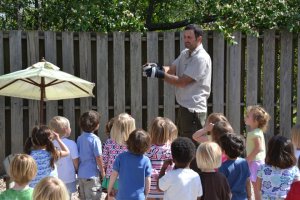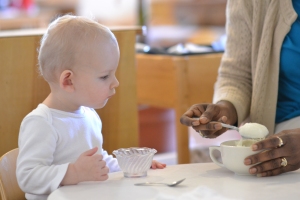Each quarter we meet with Parents to share the joys, discoveries, and developments happening within their child and with the group at the center. Photos and videos provide some of the most useful tools in facilitating our communication.
This past week, though, we were a little surprised that in sharing TODDLER PEEKS questions veered from the normal inquiries on developmental readiness and maturing milestones.
Instead, families want to know-
HOW ARE YOU ABLE TO CAPTURE SUCH AMAZING FOOTAGE
It’s not easy being a fly on the wall amongst a community of inquisitive toddlers, but if you are interested in capturing their authentic relationships and discoveries, we suggest:
1. A Photographer the children Know and Trust… Rather than bringing in a professional photographer, consider investing in a few basic amateur photography classes and capturing the footage yourself. Children are more likely to continue their daily activity amongst their peers and with the teachers they have come to know and trust. Bringing an outside photographer is guaranteed to draw attention away from routines and concentrated activity or draw children into themselves and closer to their safe bases. Much like a new pet or new material, a new person introduced into the environment causes quite a stir lasting into the weeks.
2. Stay with the Child’s Interest…. Focus on the activity of a single child or small group of children instead of trying to capture everything that is taking place in the classroom. If something distracts your child’s focus, pan out in order that the audience can understand the distraction. Don’t forget to eventually return to the subject of the original child’s interest. If able, stay focused on the activity until the child has finished and moved on.

3. Carry a Camera on you at all times… In reality, the early childhood professional has little time to document her work. When those moments do present themselves, if you have to leave to find and set up your camera, you are bound to miss it. Prepare yourself and your camera each morning before entering into the classroom. Have your camera secured on your body allowing you to quickly and quietly access it without drawing attention to yourself.

4. Don’t feel Pressured for daily documentation by photography…. There will be many more days that you do not use your camera than you do. Avoid taking film for films sake. That can quickly become a storage and editing nightmare. Look for quality, not quantity.
5. Get Comfortable and avoid the Stare Down… Most early childhood professionals already know that the best way to see the child’s point of view is down low, at the child’s level. Find a comfortable seat at the perimeter of the child’s environment. Children have come grown accustomed to filtering out the adult world and conversations often occurring just above their heads, so when you do settle down, it may be seen be the child to participate in their activities. Try not to make eye contact. While your camera may be pointing at the child, your eyes should not. Quick glances will ensure that your subject stays in focus without causing photographer and child to engage in a stare down.

Capturing video in the classroom can provide a useful means of documentation and validation for the early childhood professionals. However, this need should be balanced with respecting the child’s right for privacy and an environment free from judgement or critique. Our own photos we share in support of your work with children and with pride of the undertakings transpiring working in the field on a daily basis. We do so with love and just a little bit of hesitance at peaking in uninvited.

The Artist is he who detects and applies the law from observation of the works of Genius, whether of man or Nature. –Henry David Thoreau

Comments